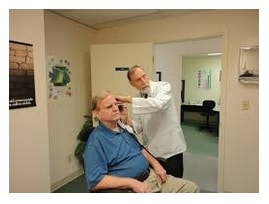It has been standard practice in the United States for decades to fit individuals who have bilateral, symmetrical hearing loss with two hearing aids. According to survey data from 2014, more than 80% of hearing aid fittings are bilateral in nature. However, some studies indicate between roughly 30% to 45% of listeners with symmetrical hearing loss prefer a single hearing aid. Several non-auditory factors such as cost, cosmetics and manual dexterity are likely to contribute to a patient choosing one hearing aid rather than two, but, several auditory factors may add to the high preference for a unilateral fit.
One of these auditory factors – binaural interference and its potential effects on hearing aid use — was the subject of a recent study, published in the January 2017 issue of the Journal of the American Academy of Audiology (JAAA). The study was conducted by Bruna Mussoi and Ruth Bentler of the University of Iowa Department of Communication Sciences & Disorders.
Binaural Interference and Hearing Aid Use
Three groups of participants: younger adults (18-28) with normal hearing, older adults (78-94) with normal hearing for their age and older adults with symmetrical hearing loss were investigated for the occurrence of binaural interference and the effects of hearing loss in the older adult groups. (Binaural interference is generally defined as performance that is better for the monaural than the binaural condition).
Participants were evaluated in the sound field using speech perception in noise tests in both monaural and binaural conditions without the use of hearing aids. Specifically, the Hearing in Noise Test (HINT) and Connected Speech Test (CST) and Dichotic Digits Test (DDT) were used in the study. The HINT and CST were conducted with speech presented in front of the listener and noise directly behind them.
Results were dependent of the test being conducted. For HINT scores, 27% of study participants had binaural interference, while 18% of them experienced a binaural advantage.
Scores on the HINT also indicated that one-third of participants in the two elderly groups exhibited binaural interference, compared with 16.7% for the younger group. On the CST, results showed that 12% of participants had a binaural advantage and one participant had binaural interference. Across all three groups, a significant right-ear advantage was found on the DDT.
Time to Re-Examine Binaural Fitting Recommendations?
Taken as a whole, the authors concluded that binaural interference will occur in at least 16.7% of listeners, and hearing loss does not seem to increase the likelihood of binaural interference. However, according to the authors, binaural interference is more likely to occur in older listeners.
Further, based on their findings, the authors concluded that the practice of bilateral hearing aid fittings for individuals with symmetrical hearing loss should continue, but it is important for clinicians to be aware of binaural interference being a factor in some patients with bilateral symmetrical hearing loss to prefer a unilateral fitting.
*featured image courtesy pixabay








Binaural interference is quite rare, and can be seen in musicians (violinists). Its because the tonal efficiency of the left ear is much better than the right ear. The only other reason it can occur, is lesions in the corpus calosem. This can be verified with a scan.
Regardless, a binaural fit should be enforced, and will take some time if a) the previous fit was monoaural b) The binaural score reduces below the better ear score.
It does take 3 months to accomplish balance, and the patient needs to live up to this challenge, Asymmetric fittings may be an escape but the cognitive consequences could be significant at old age. The clinician must be the enforcer, and apply variable adjustments to restore balanced audition. So, we do have a lengthier task ahead in such situations.